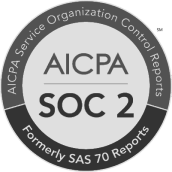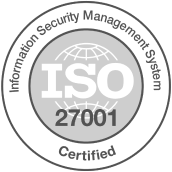Forging into a start-up company can be extremely daunting. Leaving a well-secured job to start your own field of business is no mean feat. So, first and foremost congratulations are in order if you have already gone all in your start-up business by turning your idea into a product. With some pat in the back, it’s time to head into the tough part – finding customers.
For you to survive this highly competitive and brutal start-up jungle, you need to boost your sales. That is possible only through finding new customers. Now, the way you sell to your first ten customers will significantly differ from those that follow.

Once you get the ball rolling, things, for the most part, will either be smooth or you’ll get the hang of how to handle challenges. This is the toughest hurdle to overcome. But, with tactful prowess and strategical maneuvering, this can be mastered. Let’s dive into finding how.
Wearing the Shoes of the First Head of Sales
Unless you are backed by high-end investors or choose to invest huge capital, you most likely have to fend for yourself and become the first head of sales for your business. More often than none, hiring one is not an affordable option.
Also, it is strongly suggested that instead of a professional, you, as the founder or CEO, should sell to the first ten customers. This is necessary for strengthening and knowing the base of what your sales scale would become in the future.
This will help you in transforming the constructive feedback you receive into practicality. You will also learn the art of mastering pitch decks (more about that later) and strengthening relationships with clients and employees.
Needless to say, you’ll be able to foster a better customer relationship and when you do hire a sales head in future, you will have first-hand insight into what went down in structuring your sales process.
Prioritize Engagement over Revenue
Revenue is the fuel that will run your business. However, at this stage, try not to be too obsessed with revenue. Instead, focus on increasing your engagement with your customers. For your initial customer to become an active customer, you need to ensure that they use your product or service at an engagement level.
After all, the level of engagement that your first few customers will have with your brand will ultimately be the most distinct sign of long-term brand adoption. It should be noted that the more engaged your customers are (especially these first few), the better sources of reference they’ll become.
A good way of assessing the feasibility of your product or service is by finding out whether it has the potential to solve any real problem for the users. Usually, the best measurement of product/service success is by judging how frequently they are being used by your customers. And engaging with them regularly will give you that idea.
If you can solve a problem, your customers will pay you, meaning you’ll be here for the long haul.

Gauging the Early Signs of Whom to Pursue
As an entrepreneur, time is key and at this early stage, you need to practice wisdom to figure out when to keep pushing (without being overbearing) and when to walk away. This is easier said than done and is usually a gift that people gain through their own work experience but noticing a few signs will help you get on the right track.
For instance, if a prospective customer is looking for way more than what your product or service is meant to solve, then they won’t remain with you for long. So, give your focus somewhere else. Similarly, if a prospective customer has demands that go beyond what you can afford, simply walk away.
This is essentially the process of discovering the early adopters from your pool of potential customers.
Marking Your Territory Online
This doesn’t have to be anything fancy. All you need is a domain page with your brand name (or as close as you can get) to help you form your web page. Keep it basic and don’t worry about investing too much at this nascent stage. It will spike up as profit enters your pocket soon.
For now, this should serve as a landing page wherein users can provide you with their contact details. To increase your credibility, drop in your socials and make some buzz on your social media through blog posts and innovative online promos and campaigns.
Not to mention, have a well-defined logo that would help you get recognized. In the ‘about us’ section, let your users know what they’ll get from you.

Bridging the Gap between Outreach and Conversion Stats
Outreaching is one of the most pivotal ways to widen your network, increasing your audience and getting attention from potential customers to who you otherwise wouldn’t have been able to reach out to.
For this, you need to rely on quantifiable measurement of your outreach programs and it is possible only through software. You need to minimize cold outreach and maximize the conversion rate of potential customers into loyal customers.
Bounce rate, open rate, reply rate, reply to demo-ratio, and demo to close-ratio, are some of the crucial metrics that you would need to assess where your brand stands in its journey to position itself in the competitive market.
Selecting the Most Viable Means of Communication
With so many different means of communication available to you, it can get overwhelming which one, or to be precise, what combination of them to choose to hit the right target audience.
As the idea is to think long-term since finding customers isn’t enough, you need to retain them as well, consider diversifying your communication strategy. Figure out where to stress more between the options available – cold email, text message, phone call, social media, video messaging, web chat, word of mouth, etc. Your line of business would also govern this decision.
Keep in mind not to seem too desperate in your attempt. You need to make the customers feel that they need you, not the other way around. Nail a good first impression. Respond as quickly as possible and during phone calls, keep holding time as minimum as possible.

Role of Files in Enhancing Your Business
Nothing can improve the efficiency and organizational level of a company than file management. If you are present on the digital platform, you need to master this concept to ease out business operation, increase revenue, boost sales, nurture customer relationships, and everything in between.
This is basically the methodology of naming, storing, and organizing crucial pieces of data in the form of files in a system. Now, you may think you can rely on spreadsheets since you, as a start-up, can handle the current load of information you have. But, why not invest in something that you eventually will have to do down the line, anyways?
File management can get intense and this is why you need file management apps like CloudFiles that act as a central hub for all your files and data. No matter what platform you are currently using, you can shift to CloudFiles with ease because of its integration-first feature.
You can personalize the security of each file and can use its automated workflow aspect to boost your sales and marketing. It will also help you in analyzing the behavioral pattern of your clients and customers since it provides you with metrics such as file views, number of file downloads, and time spent on each file, among others.
Importance of Personalized Pitching
Customers are smart and you can never undermine them. Thinking what worked for someone might work for someone else too is a mistake that would cost you. As such, plan out how you are going to approach different sections of your target audience differently.
Work like a chameleon and mould your pitch to best suit the need of your concerned audience. Don’t make your pitches generic or robotic. Speak to them as an ally and try to truly connect the dots as to what drives them. Researching your contemporaries might give you some valuable insight as well here.
You might have the best product or service in the world but if you can’t make your audience understand why they need to invest their money into it, your product or service is as good as the ideas in your head – present but not fruitful.

Business Communication through Files
Files are the currency when you are communicating in the digital world of business. For it to thrive, you need to check that it fits the following five aspects.
Encryption
You don’t want your confidential data to get into the hands of someone who might breach your system or who misuse it. Therefore, ensuring that your files are locked with a password or code or other similar lines of protection is mandatory.
Compliance
The mechanism of your file management system has to comply with governmental and internal legalities. Since customers and clients are trusting you with their private information, you owe it to them to secure their data.
Automating Lifecycle
When you are relying on an internalized chain of communication in your business, there’s bound to be an abundance of files. As such, automating the lifecycle of these files is needed for decluttering and freeing the storage space.
Diversity
In digital business, you would have to deal with files of varied formats and sizes that need to be recruited from multiple sources. So, this diverse acceptance of such software helps in cutting down major steps which you otherwise had to take in changing formats and sizes.
User Management
One key reason to incorporate file management instead of manual recording is to avoid any negligence or error. With file management software, this is taken care of since administrators can tactfully allot home directories to concerned users based on the required hierarchy.
Final Thoughts
Your first ten customers will help you in learning about your product or service that you, from the perspective of a seller, might have missed. They’ll help you in modifying and refining it. In addition, you’ll also grasp how you can craft a quantifiable sales process that will help in finding the next 100 customers.
So, consider this the stage where you need to put in your hardest work. Don’t undermine the intelligence of your customers and always trust quantifiable measurement results.





